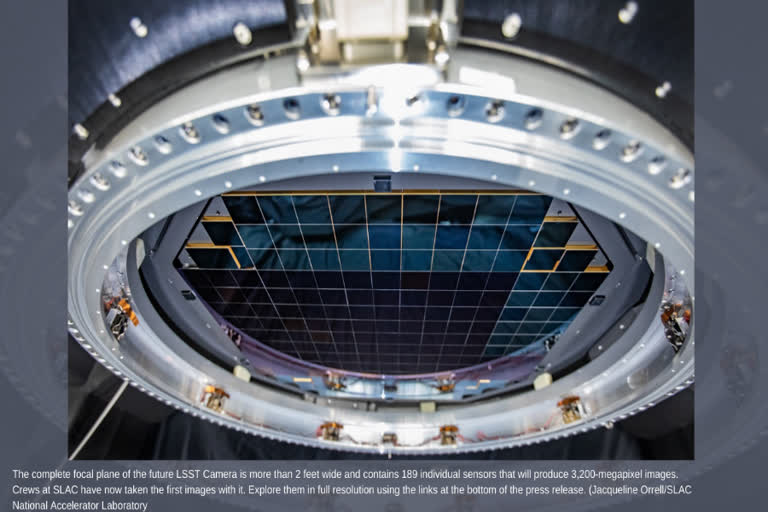California,Researchers at the Department of Energy's Stanford Linear Accelerator Center (SLAC) National Accelerator Laboratory in Menlo Park have successfully tested its camera that's capable of taking gigantic 3,200-megapixel digital photos, the largest ever taken during a single shot.
The images are made possible by 189 individual sensors cover over a two-foot-wide focal plane that dwarfs a typical camera's 1.4-inch-wide imaging sensor. Each of the sensors can take 16-megapixel images
The world’s largest and most powerful digital camera has been within the works at the US Department of Energy's SLAC National Accelerator Laboratory since 2015. The device is the centerpiece of the Vera C. Rubin Observatory currently under construction in Chile, which can spend 10 years gathering the widest, fastest and deepest views of the night sky ever taken.
Vincent Riot, Legacy Survey of Space and Time (LSST) Camera project manager from DOE’s Lawrence Livermore National Laboratory said, “This is a huge milestone for us. The focal plane will produce the pictures for the LSST, so it’s the capable and sensitive eye of the Rubin Observatory.”
Vera C. Rubin Observatory and its LSST Camera. (Olivier Bonin/SLAC National Accelerator Laboratory) The research team has released photos taken with the focal plane of the LSST camera. Recent photos include the Head of Romanesco(broccoli), the Golf ball from 15 miles, the Flammarion engraving, and a collage of the LSST camera team.
Head of Romanesco. Courtesy, Department of Energy's Stanford Linear Accelerator Center (SLAC) National Accelerator Laboratory he LSST Camera’s focal plane has a surface area large enough to capture a portion of the sky about the size of 40 full moons. Its resolution is so high that you could spot a golf ball from 15 miles away. (Greg Stewart/SLAC National Accelerator Laboratory) Photo of the Flammarion engraving. Courtesy,Department of Energy's Stanford Linear Accelerator Center (SLAC) National Accelerator Laboratory Collage of LSST Camera team photos. Courtesy, Department of Energy's Stanford Linear Accelerator Center (SLAC) National Accelerator Laboratory The images aren't as clear as people who will eventually be possible because they were taken without a lens. Instead, the SLAC team used a 150-micron sized pinhole to project images onto the focal plane.
The camera will be about the dimensions of an SUV once complete, which is expected to happen by mid-2021.
SLAC’s Steven Kahn, director of the observatory, said, "This achievement is among the foremost sign of the whole Rubin Observatory Project. The completion of the LSST Camera focal plane and its successful tests is a huge victory by the camera team which will enable Rubin Observatory to deliver next-generation astronomical science."
The camera is expected to collect images of about 20 billion galaxies over the coming decade and will help scientists to understand how galaxies have evolved. It will also help scientists to test the models of dark matter and dark energy.
Also Read: Eco-aerogels extracted from pineapple leaves, improving sustainability
